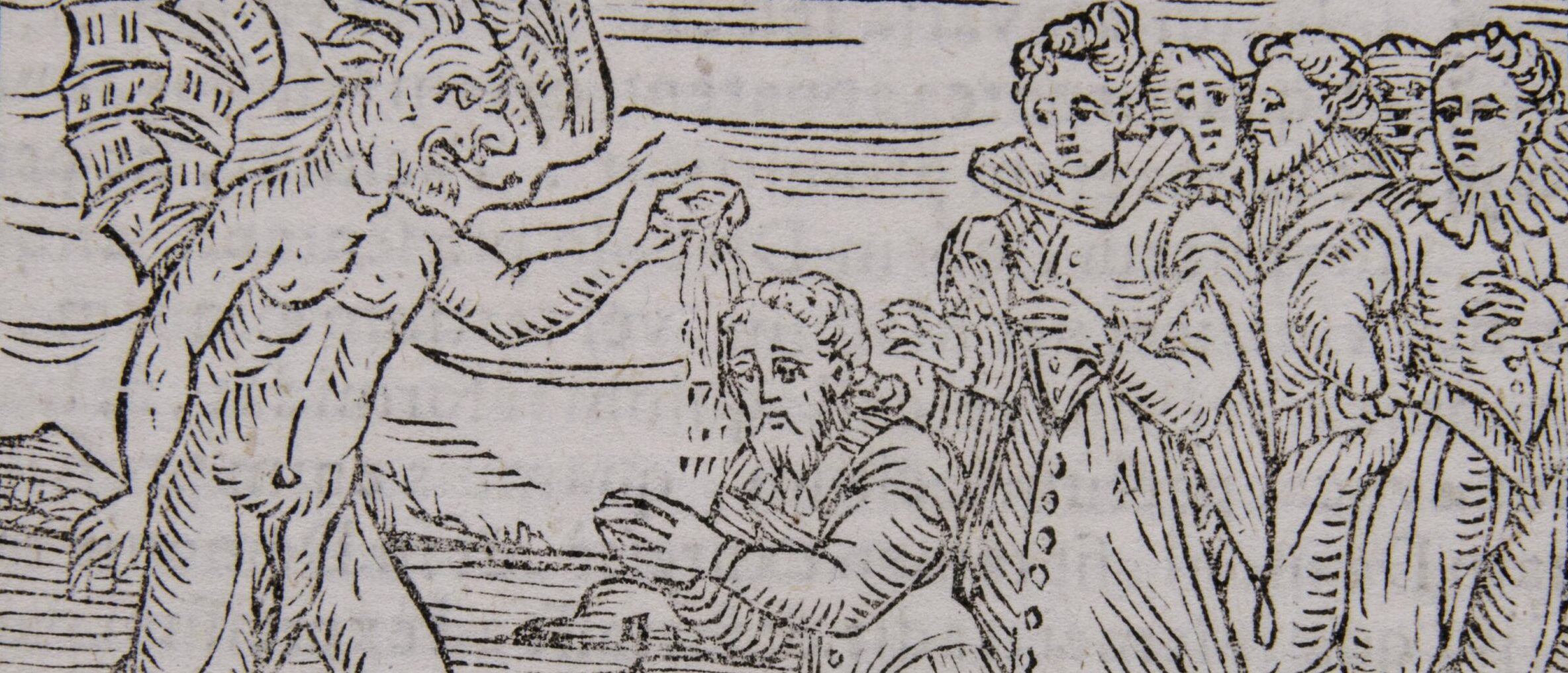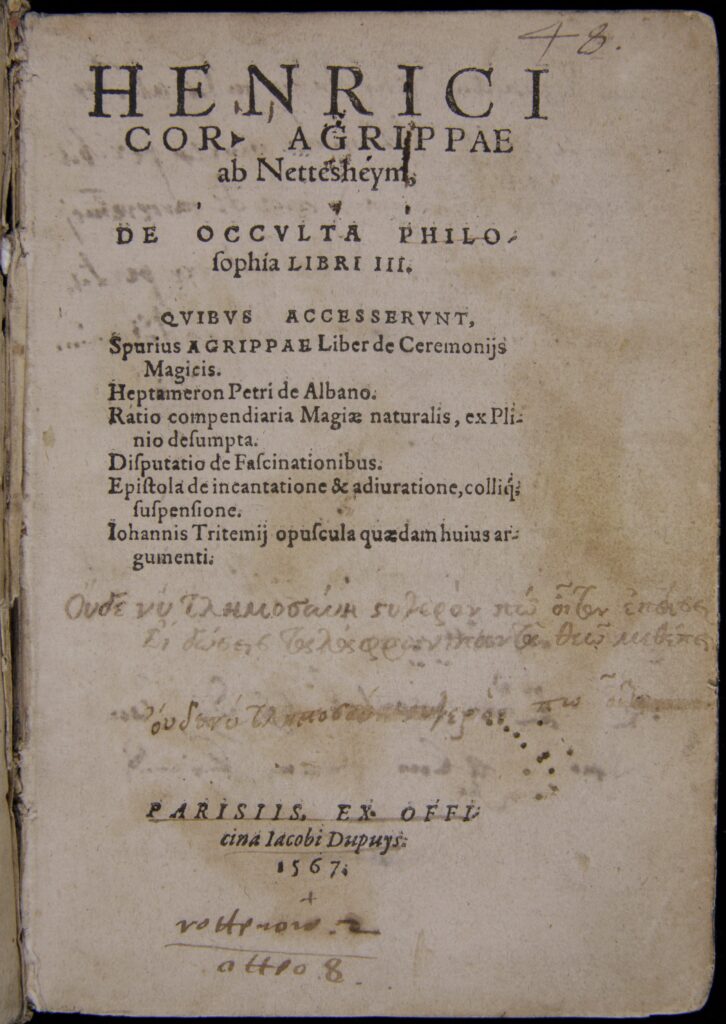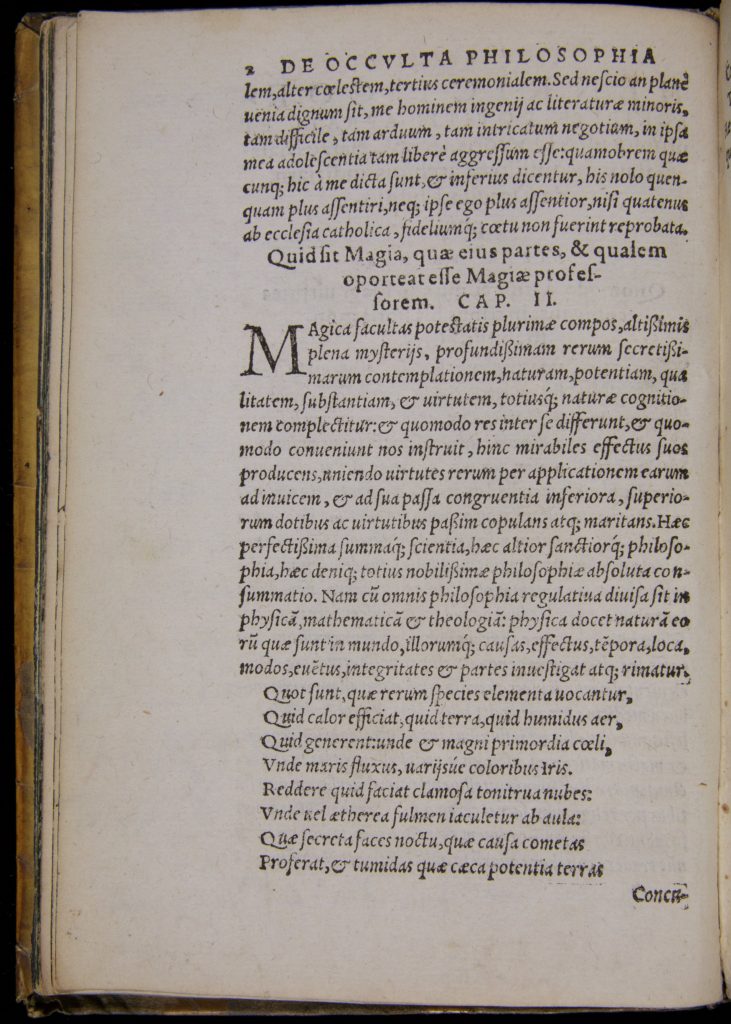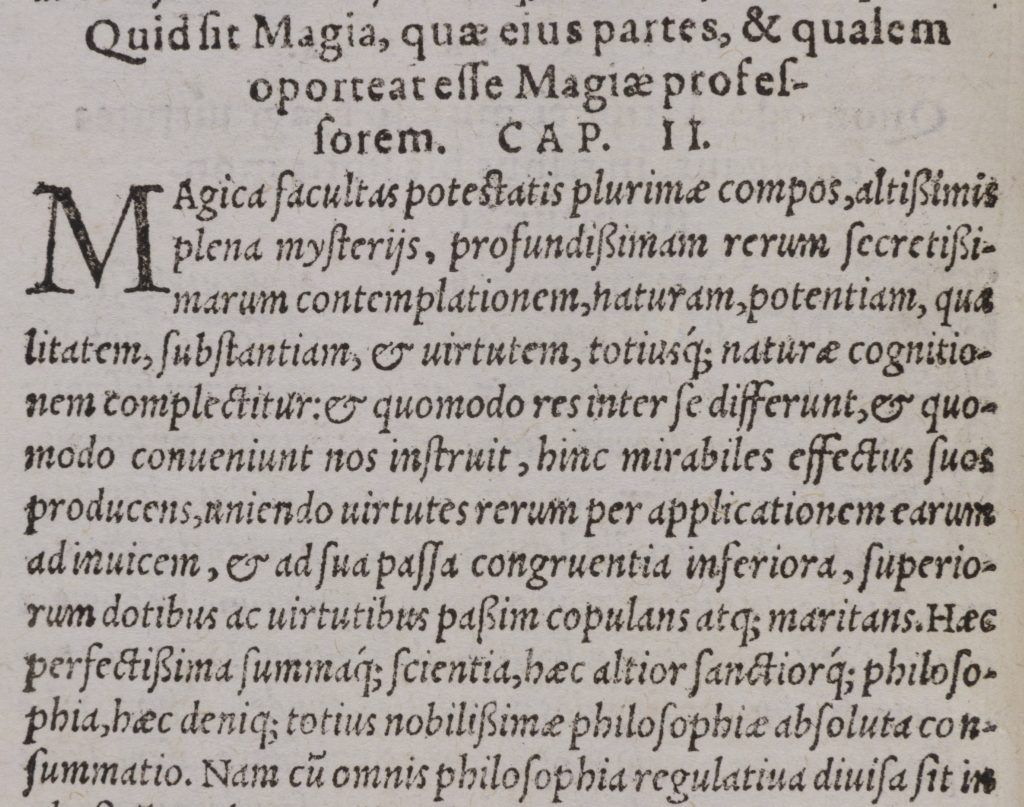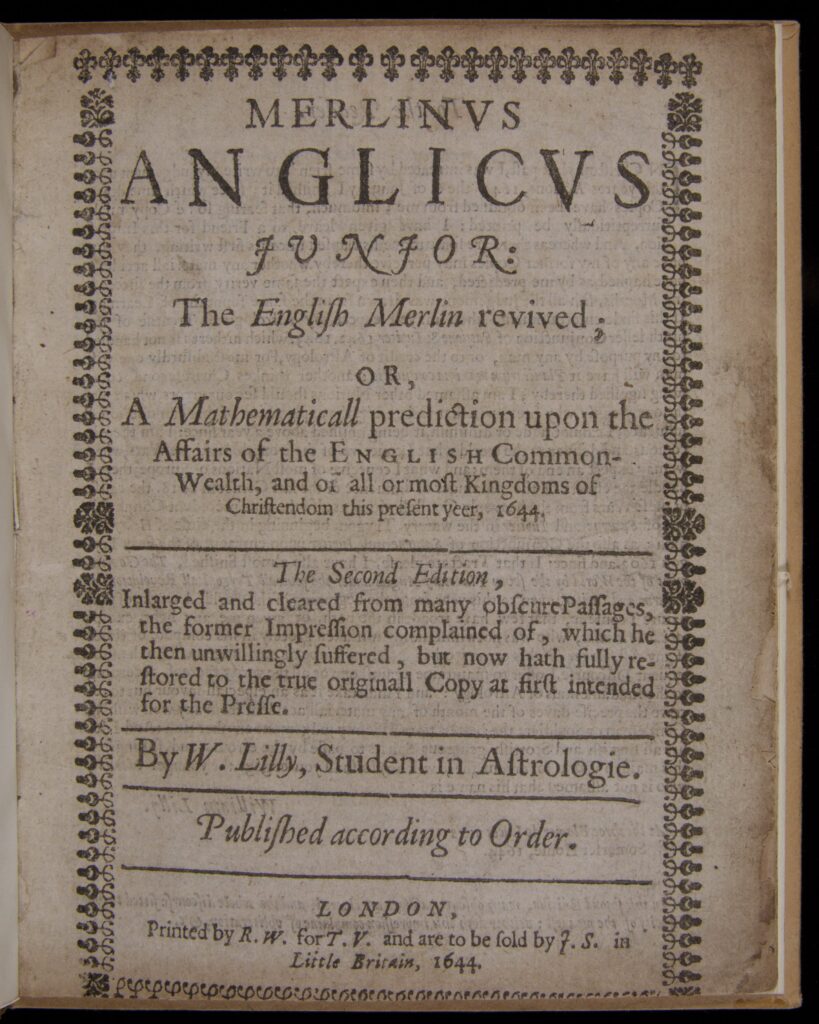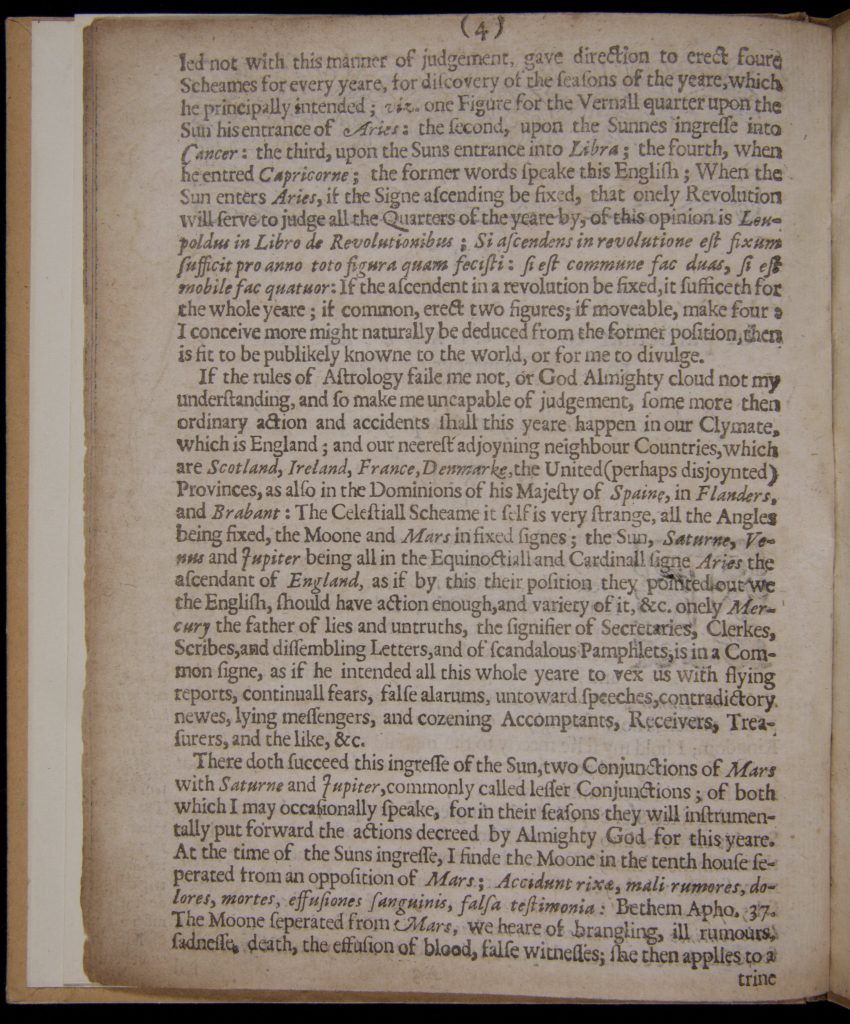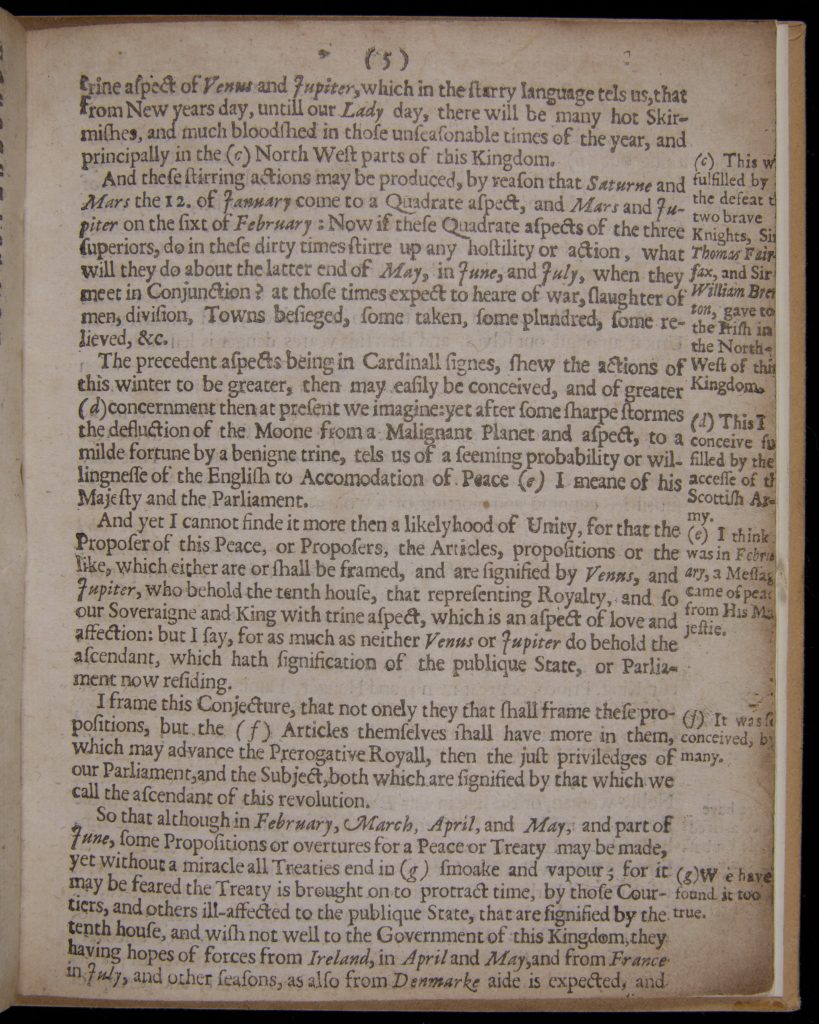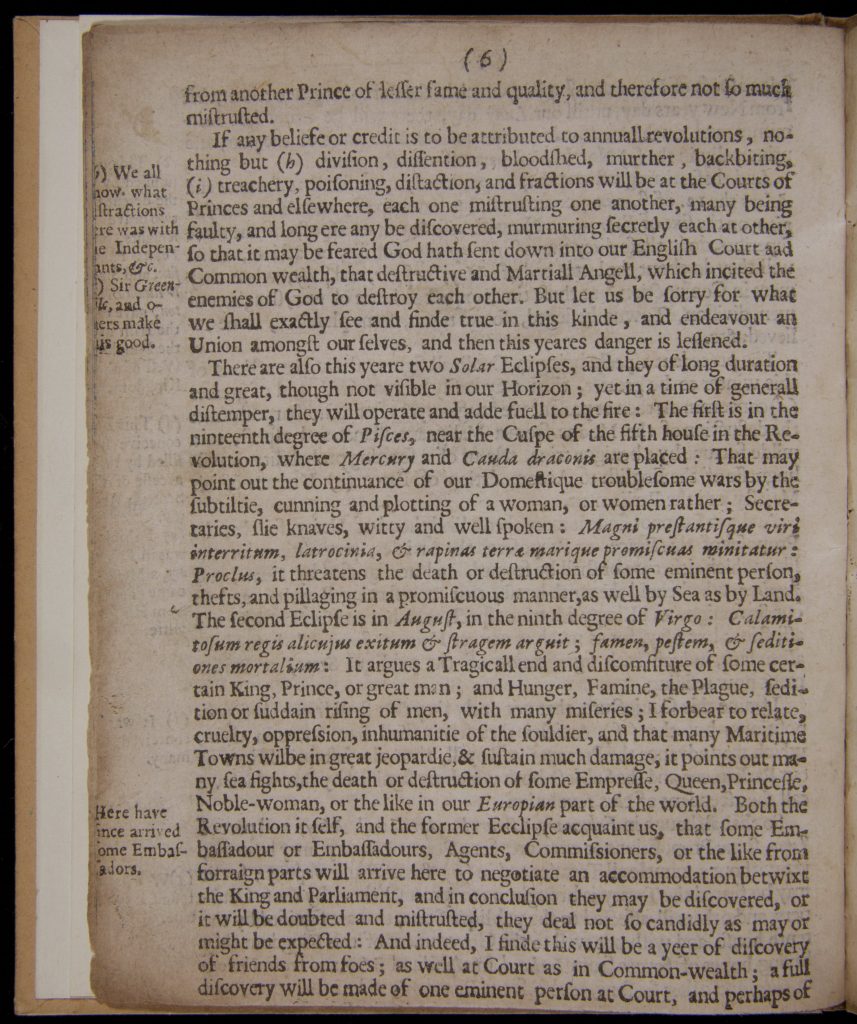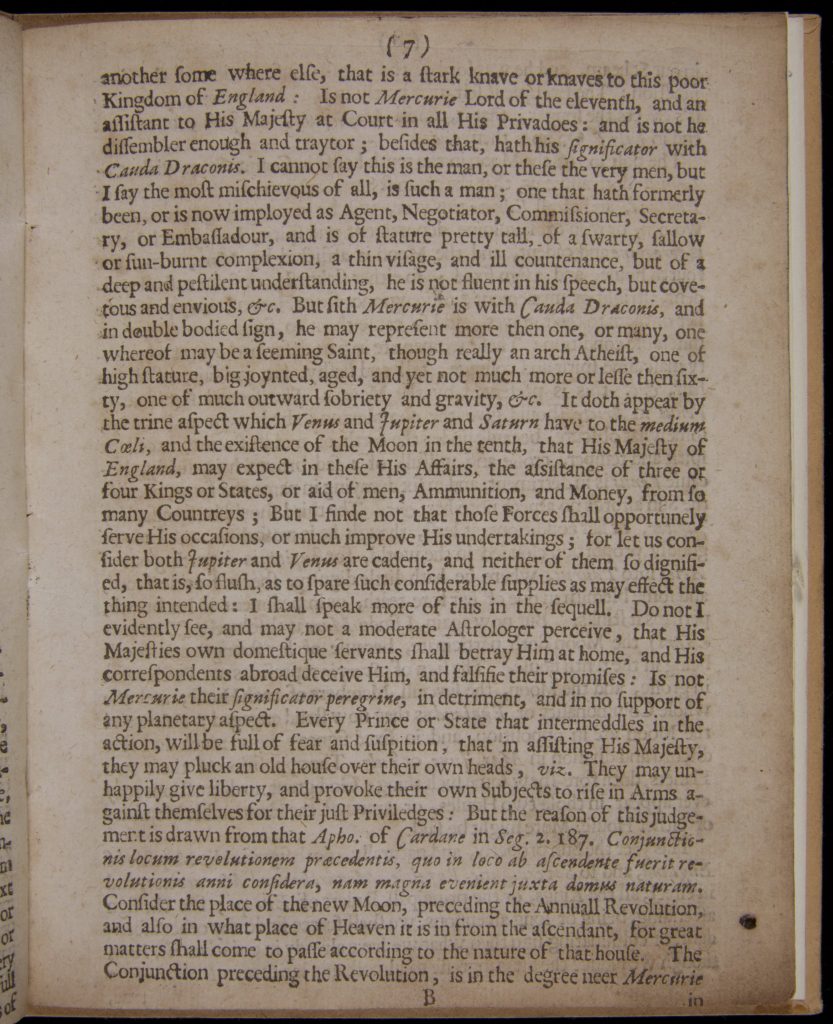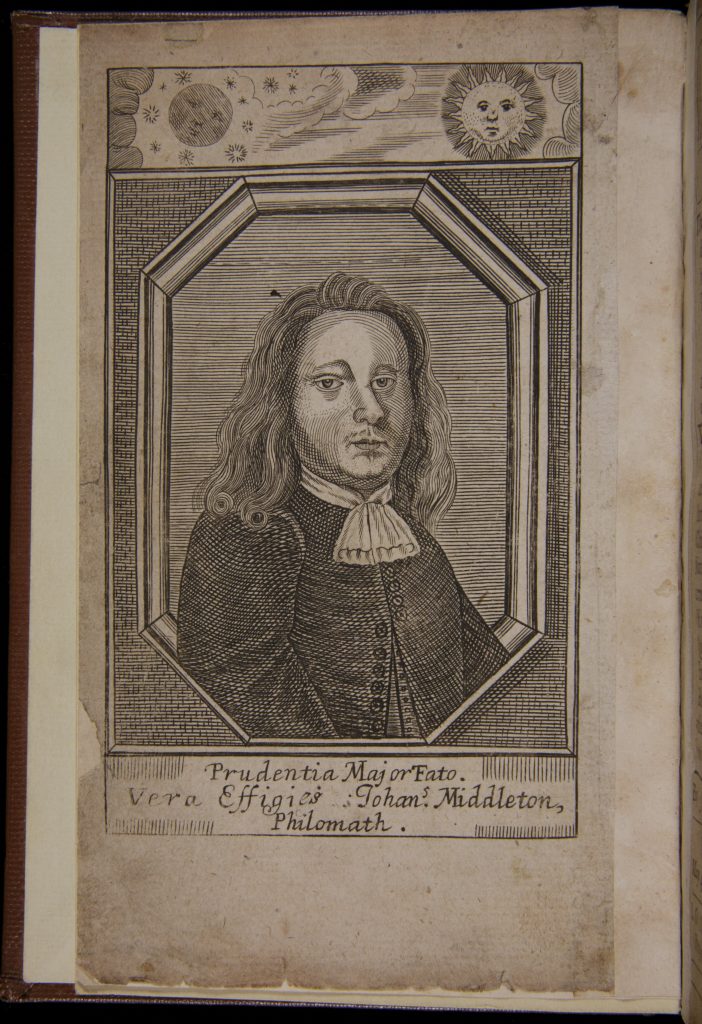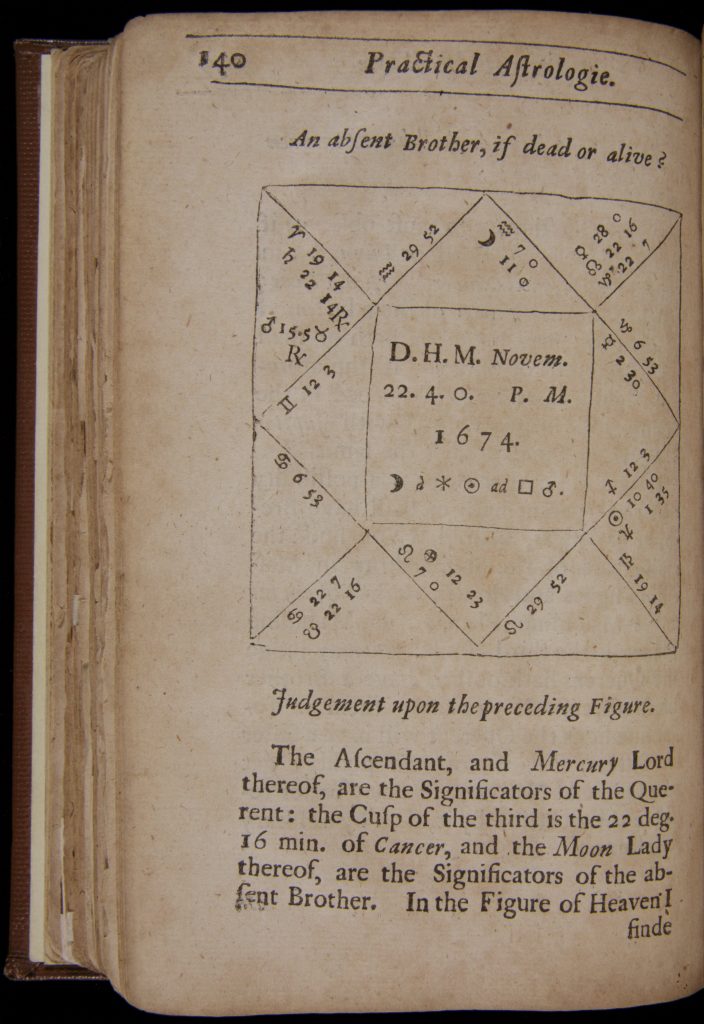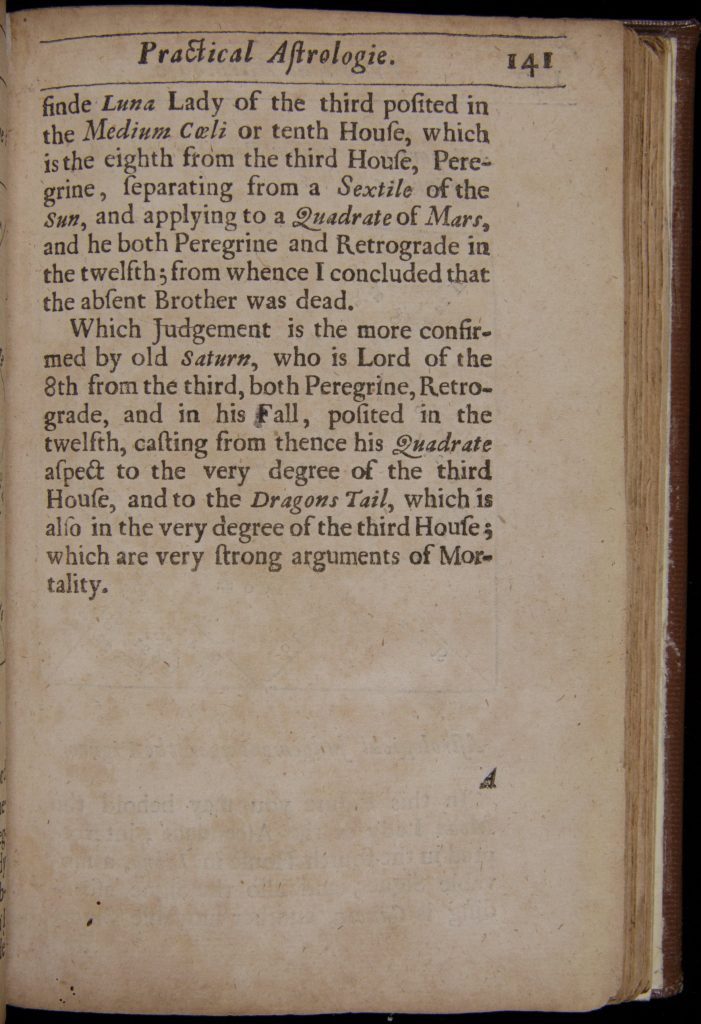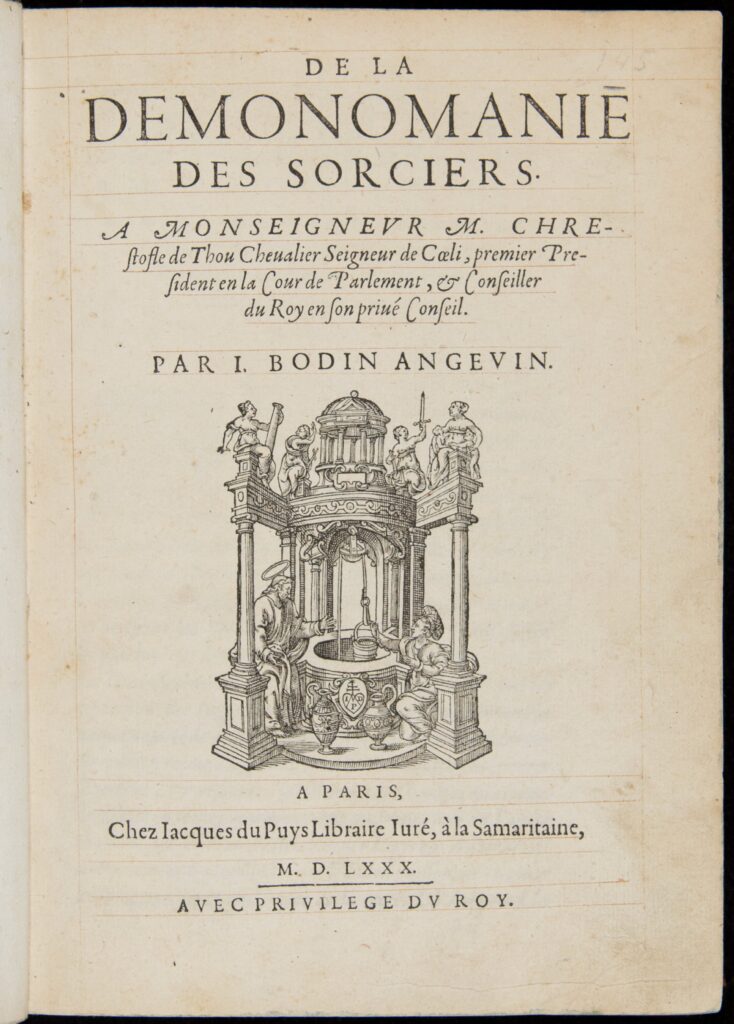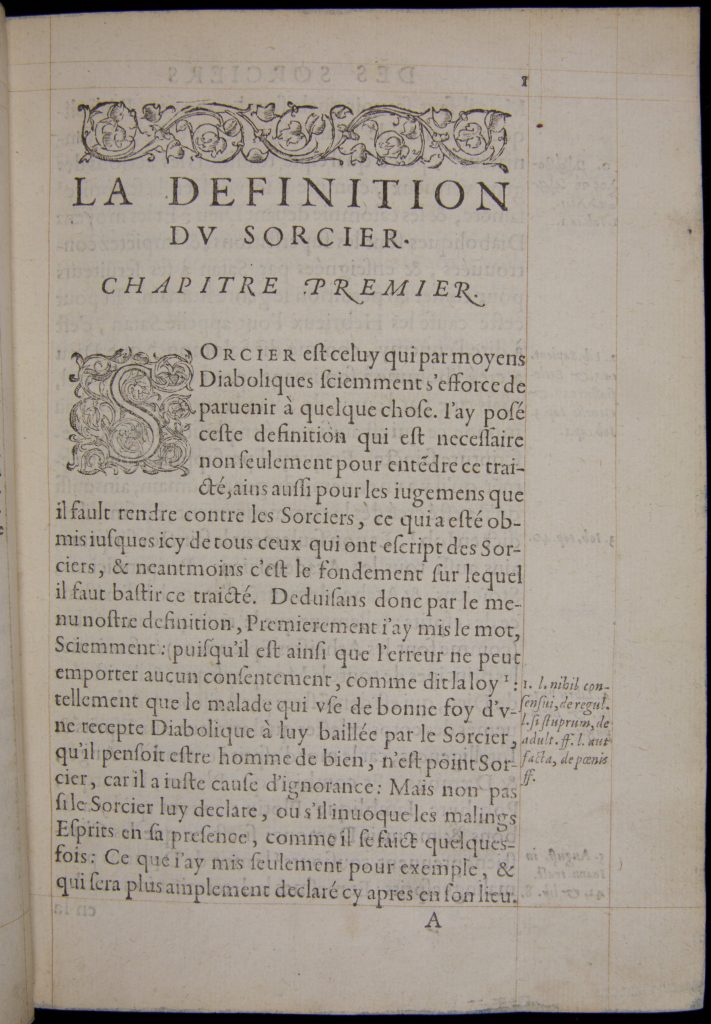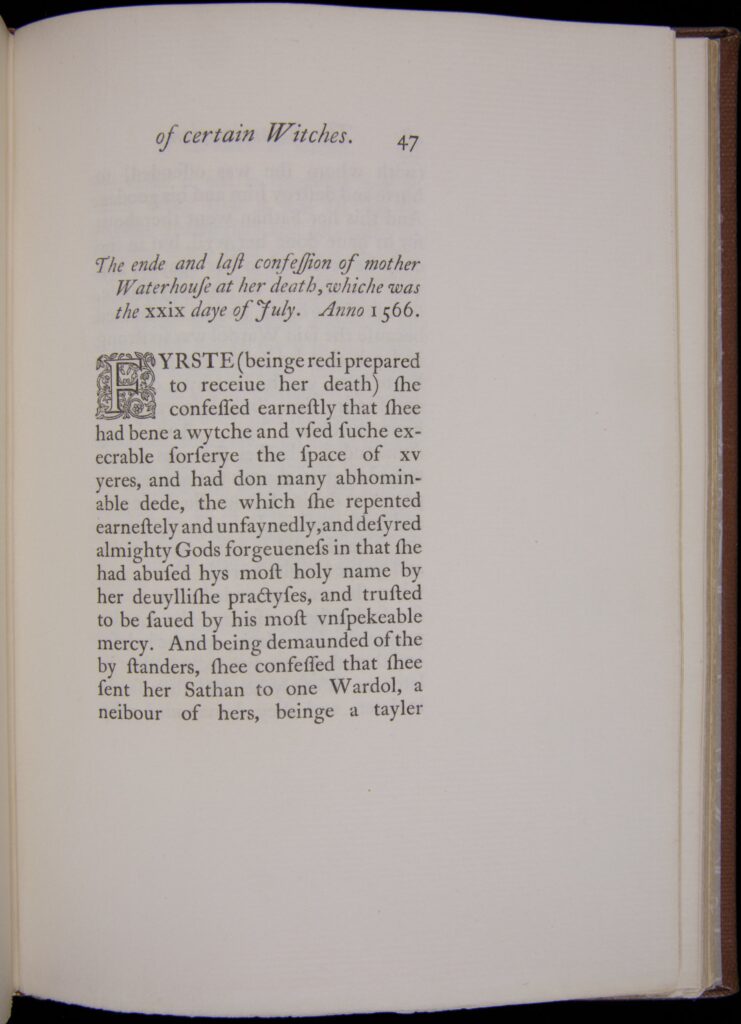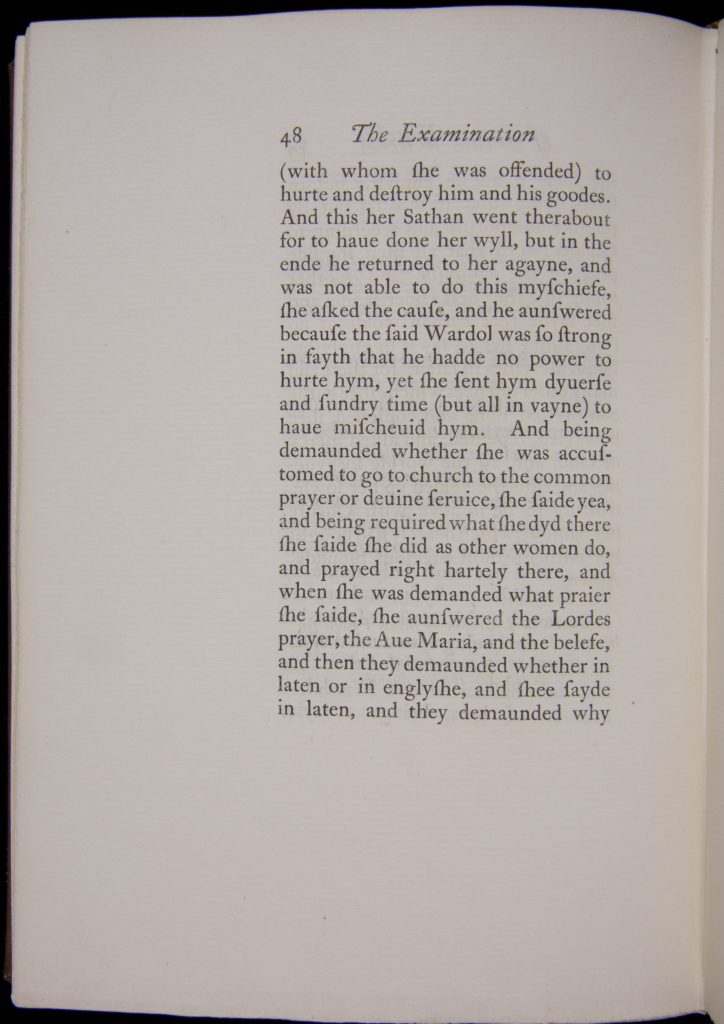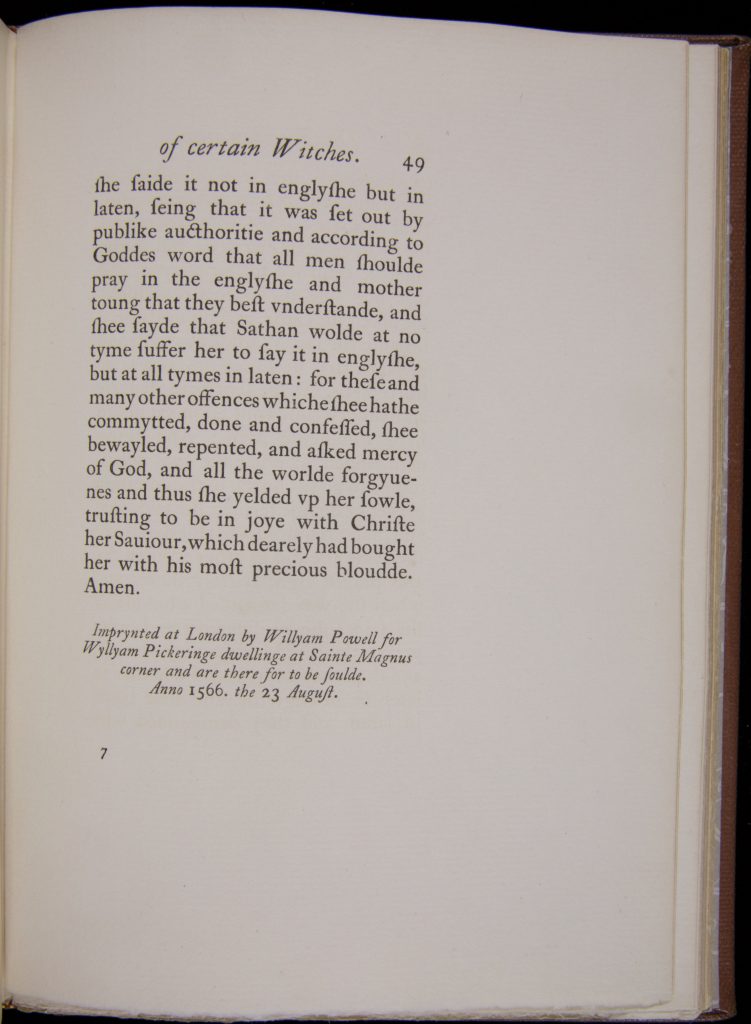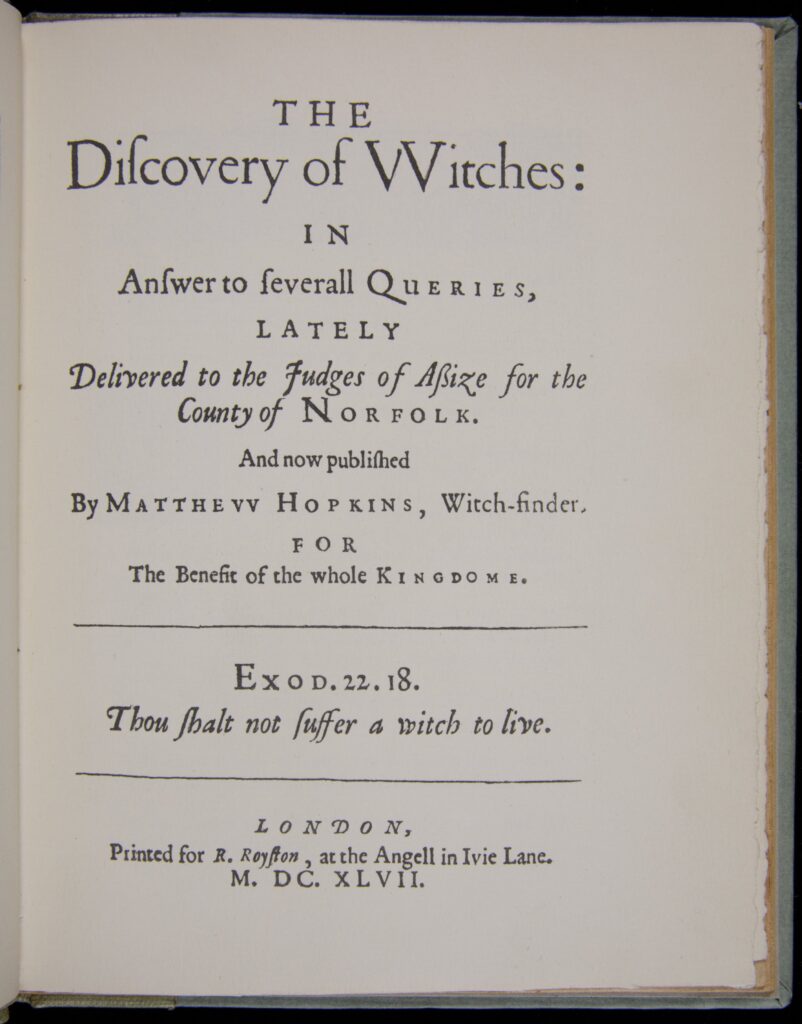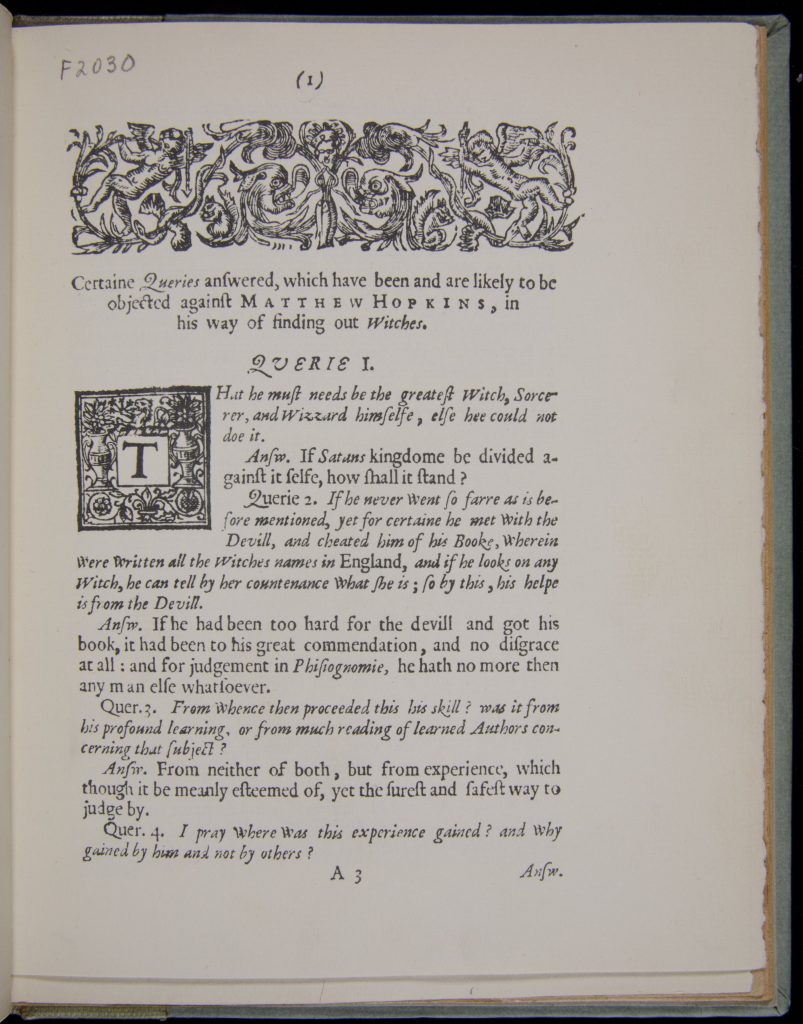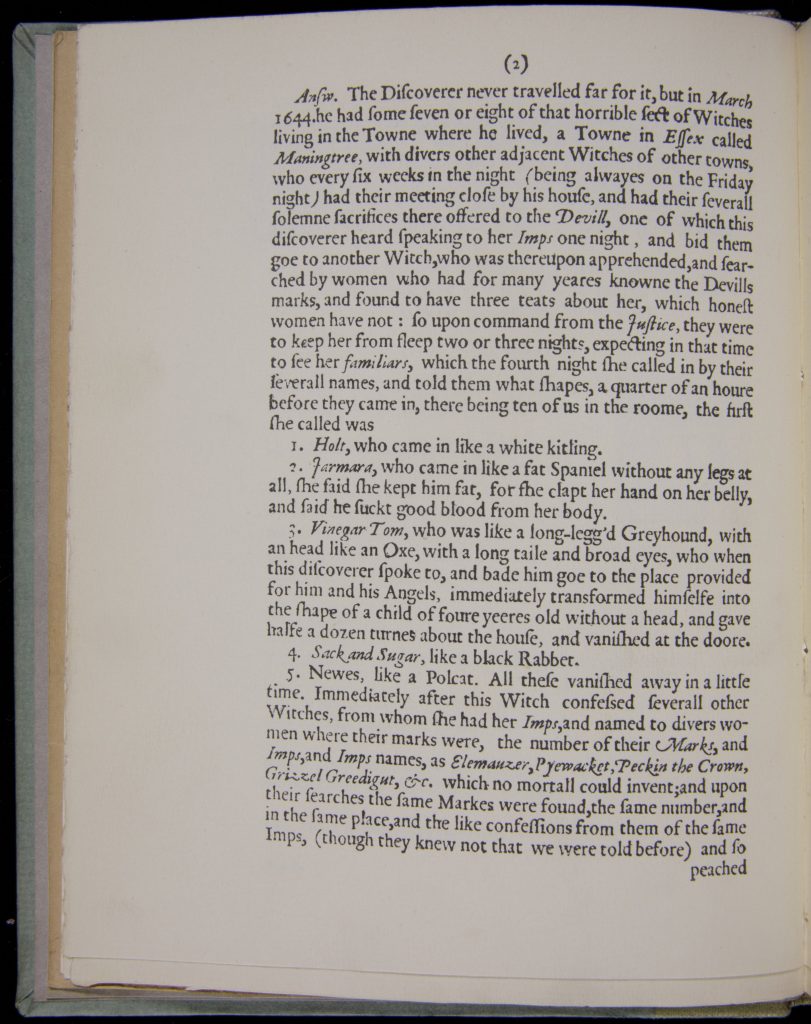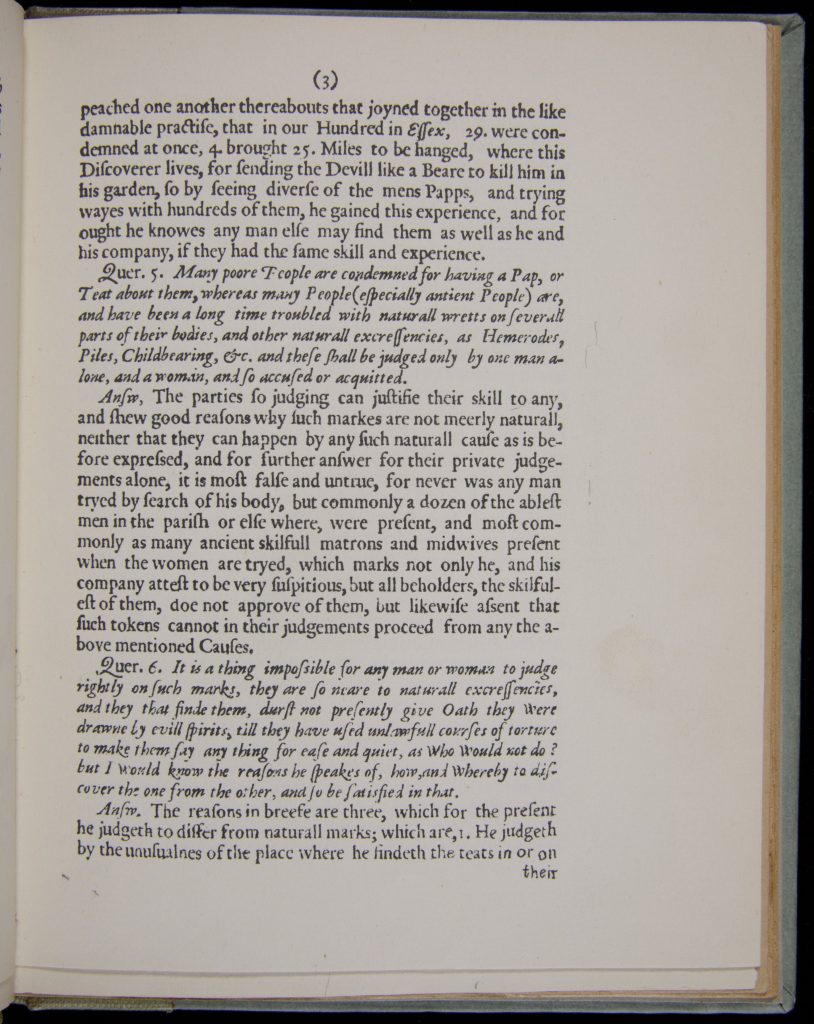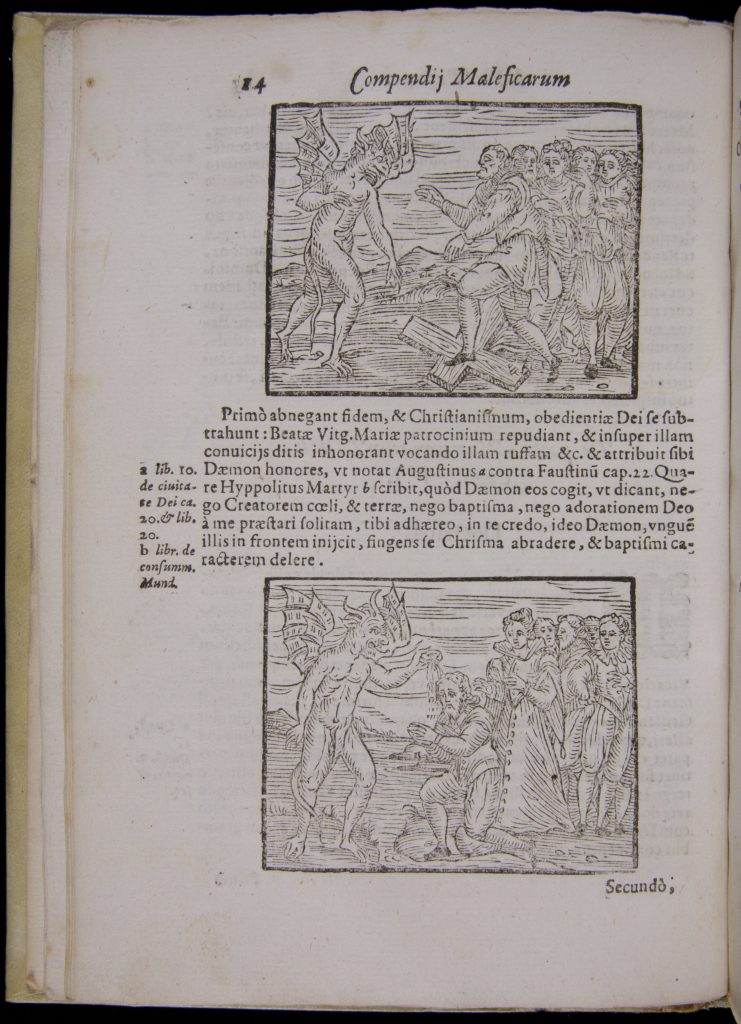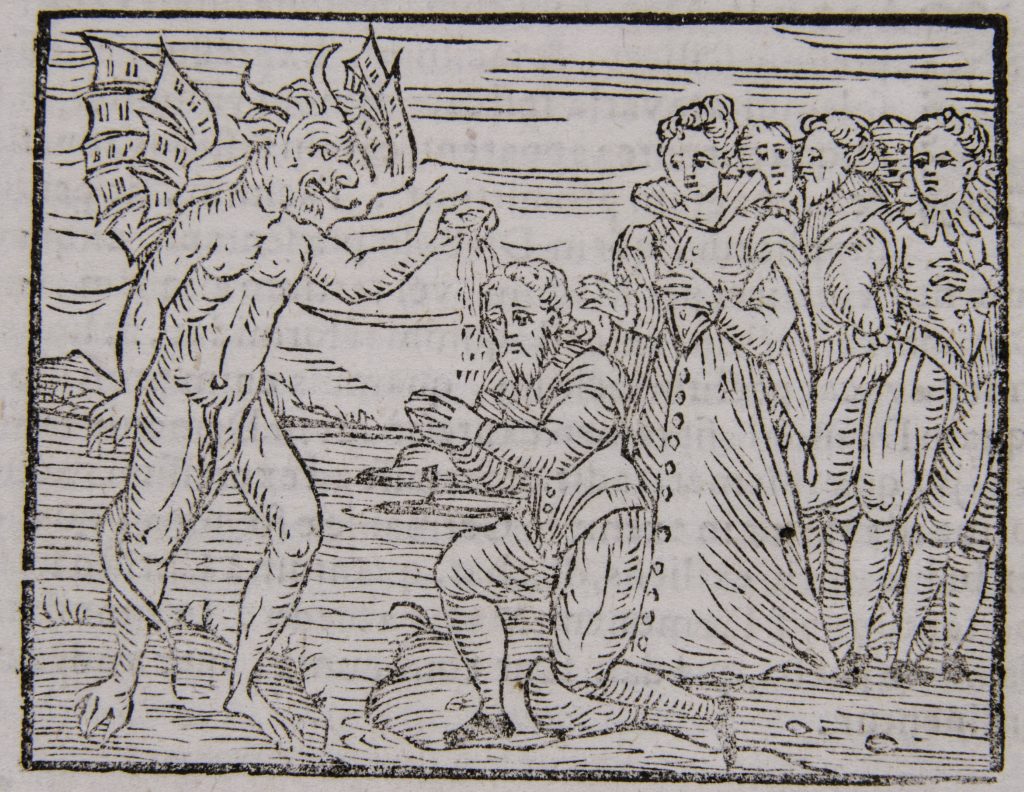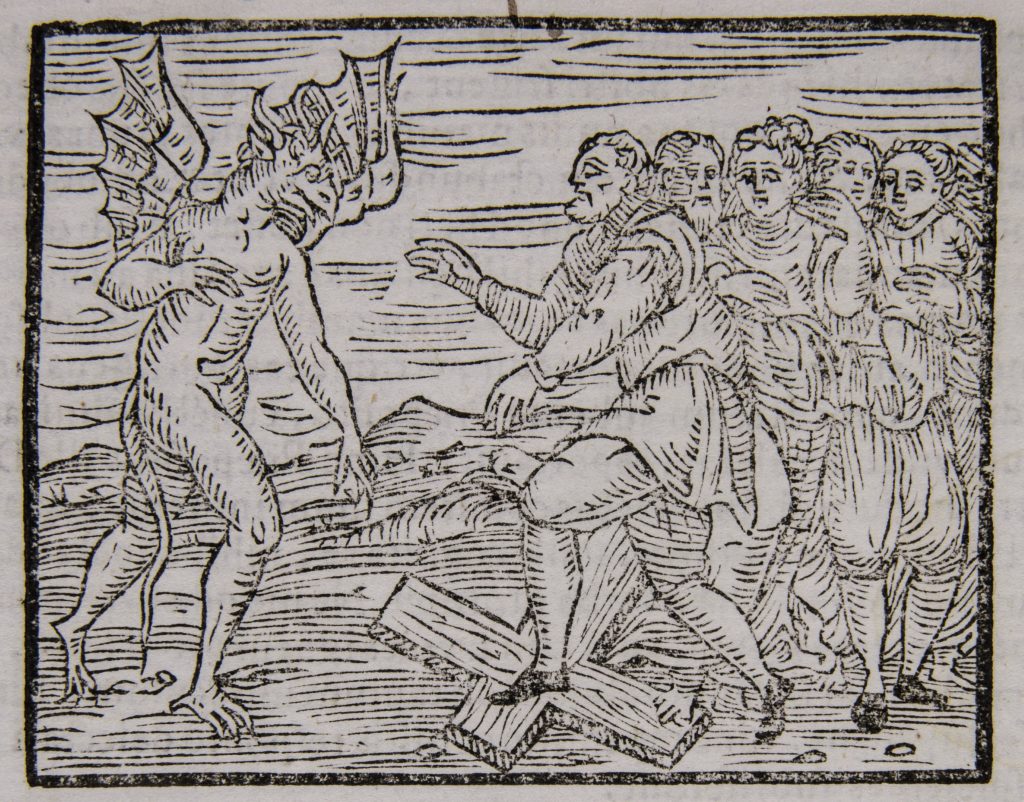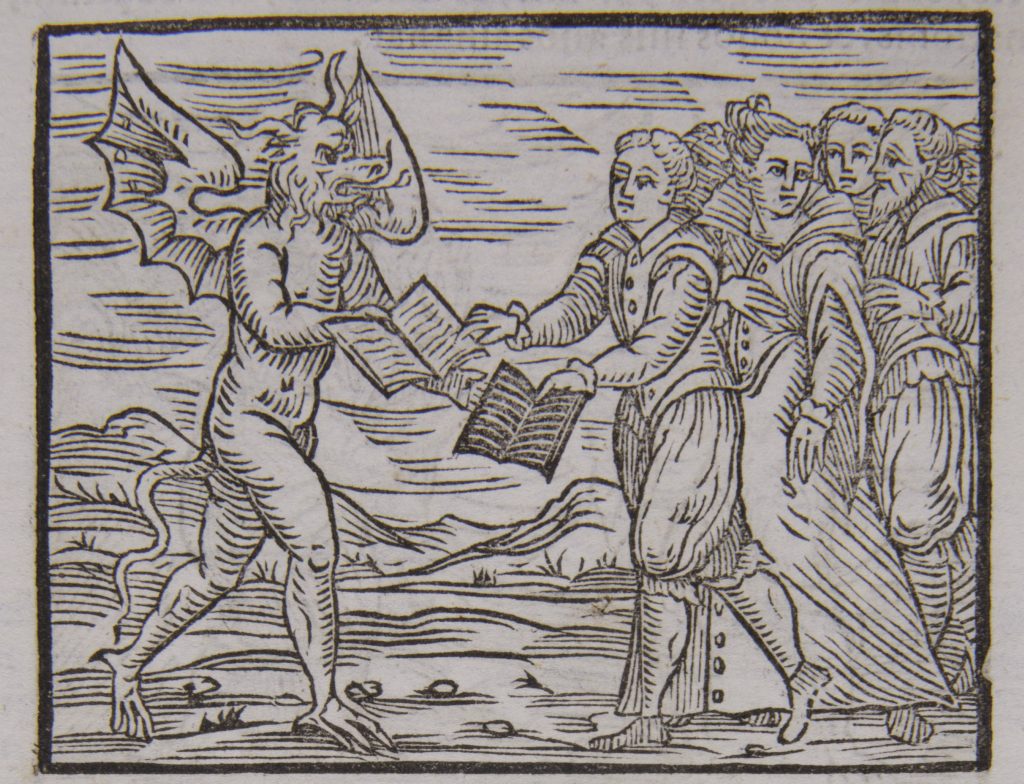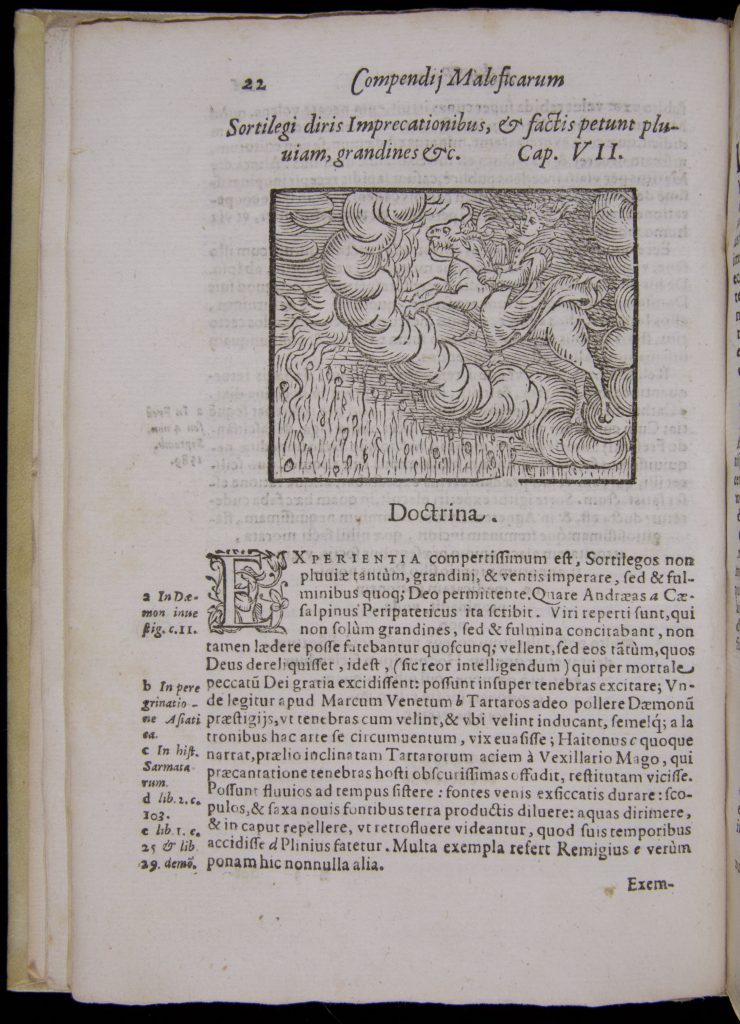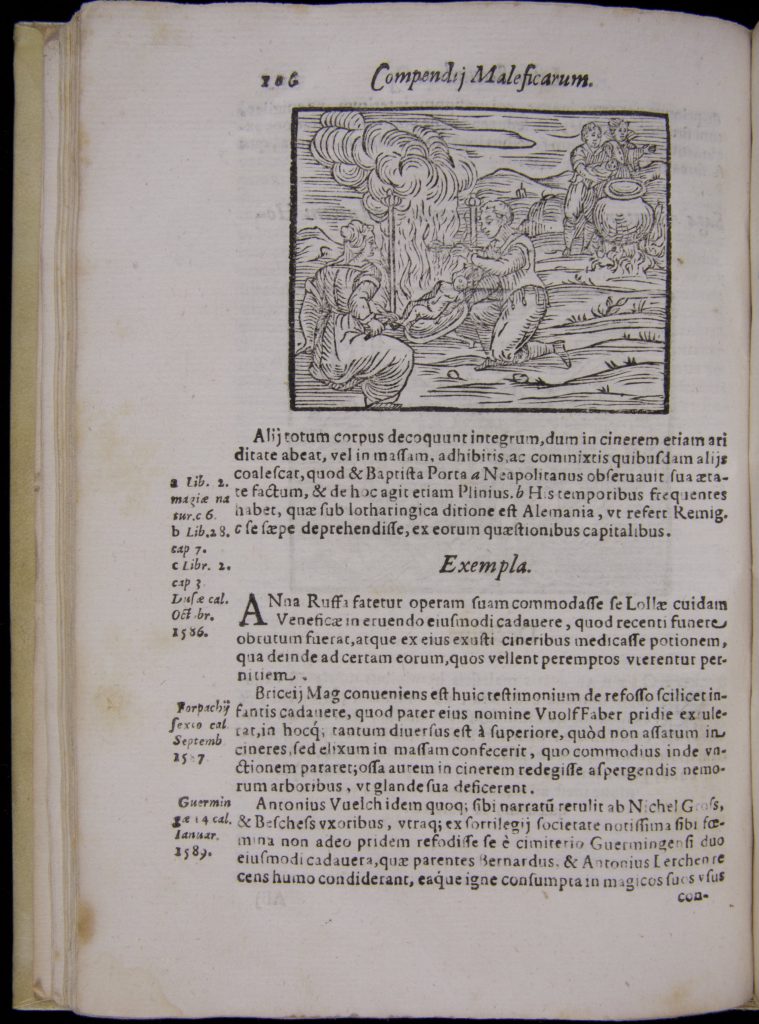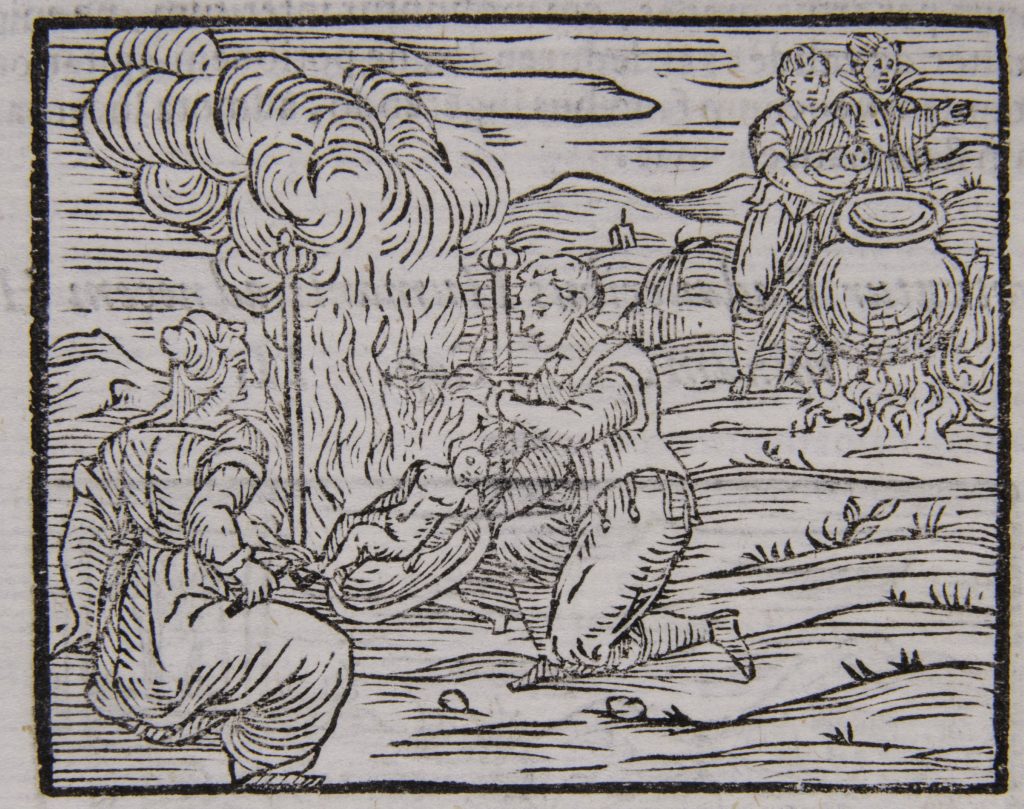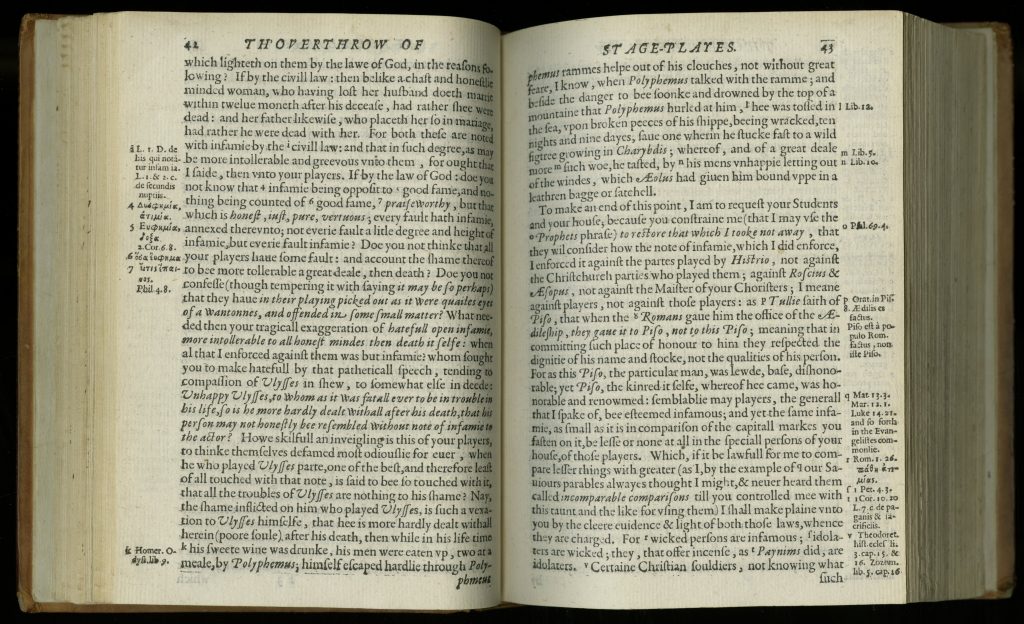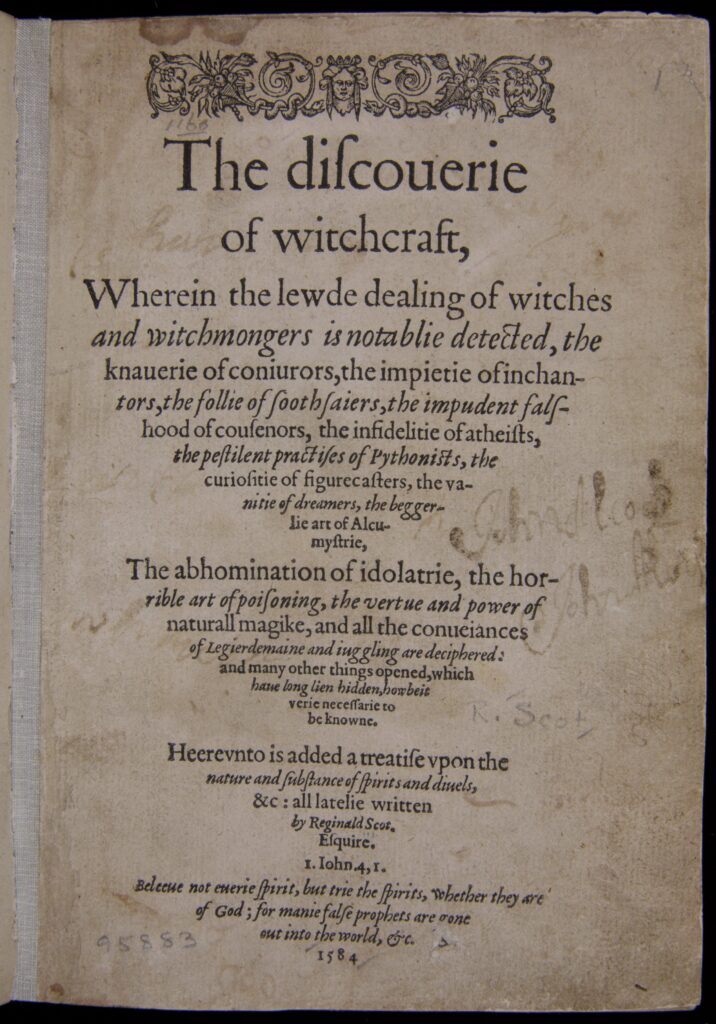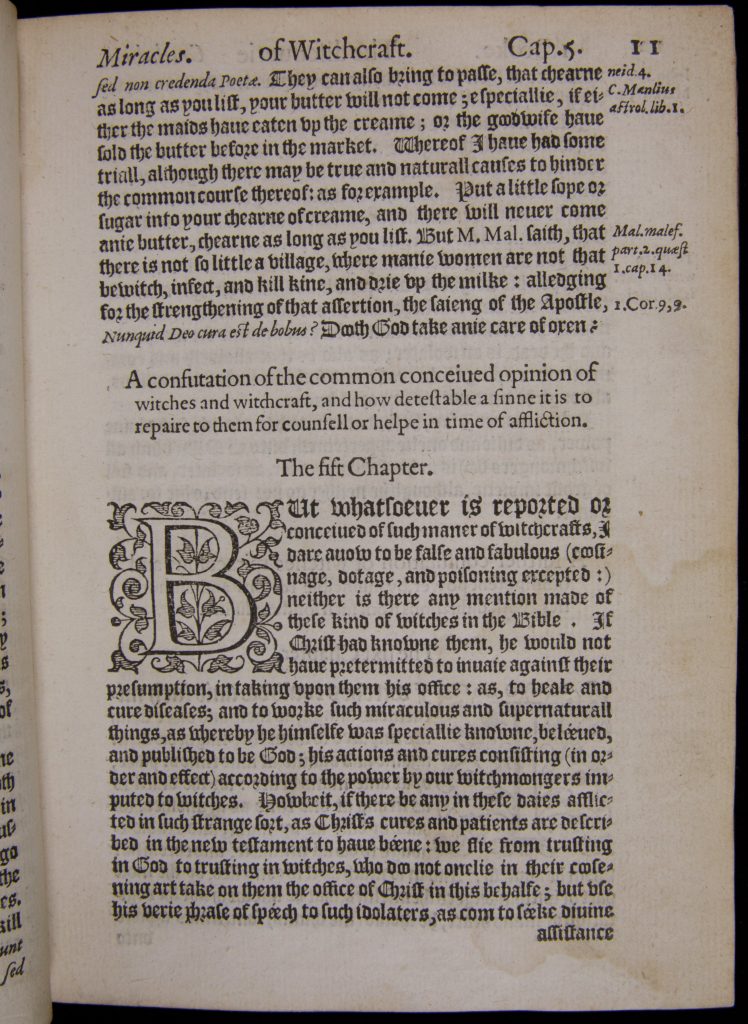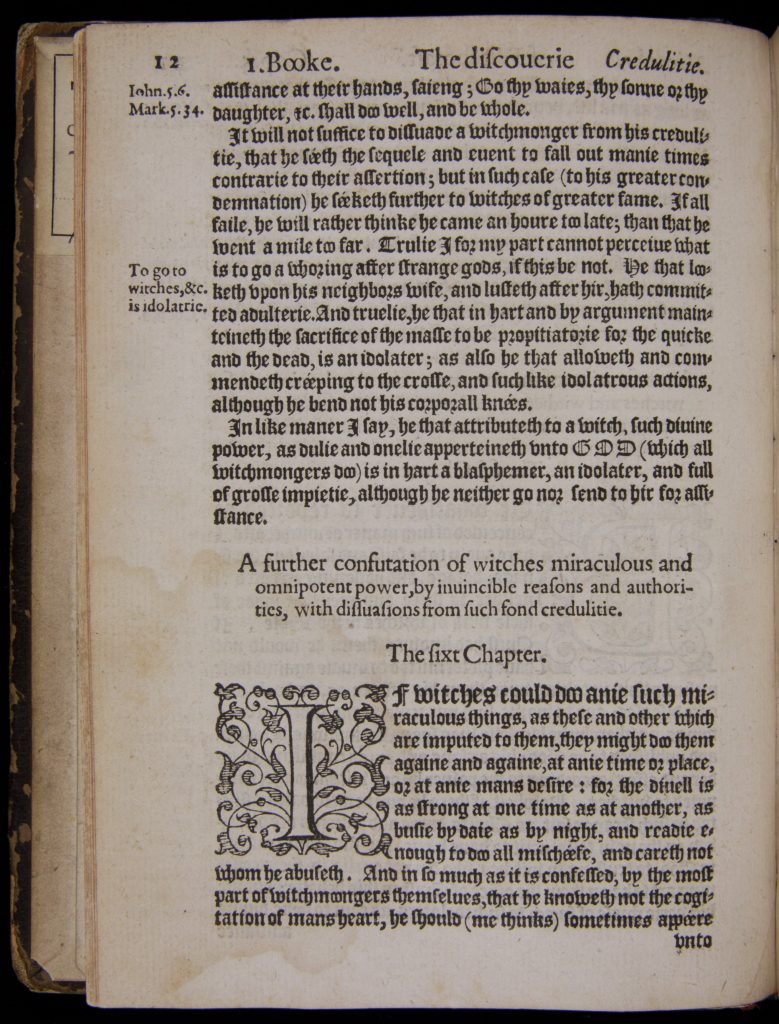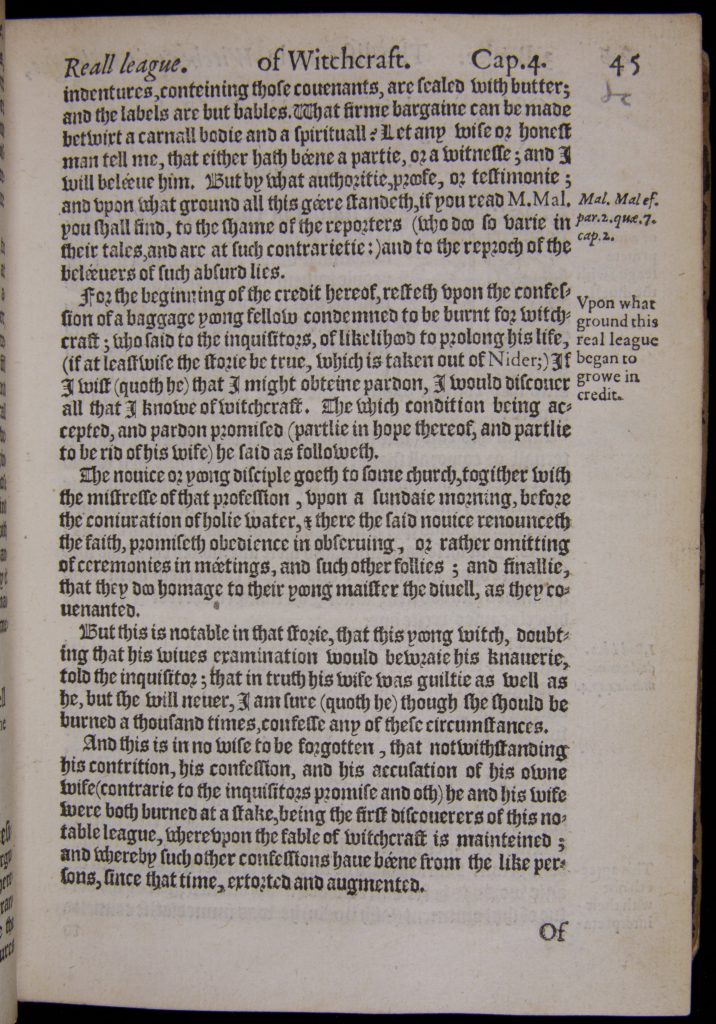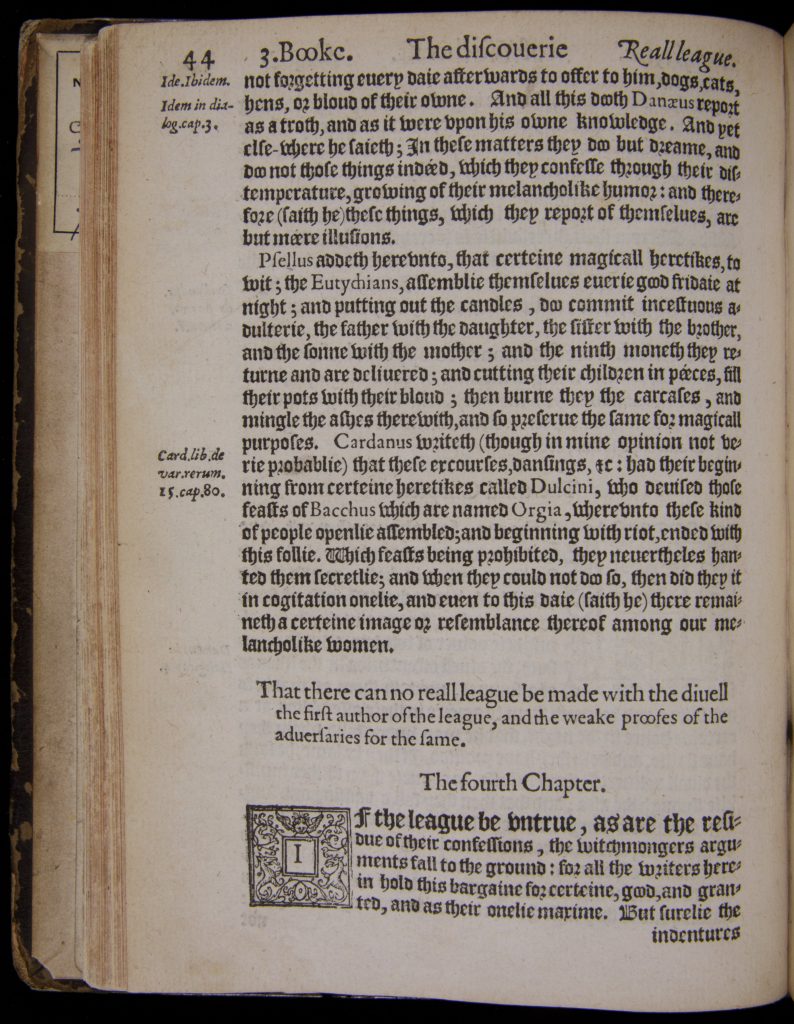Introduction

Historians have named the era in Europe that lasted from about 1500 to 1650 the age of the “Witch Hunts.” During this period approximately 100,000 people went on trial for the crime of witchcraft with around half of them found guilty and executed. The vast majority of the people accused and found guilty were women. Although the overall numbers spread out across the span of a century and a half are relatively small, the phenomenon of the witch-hunts generated a sense of pervasive fear that strongly occupied the thoughts and minds of many people from all levels of society. The willingness of men and women to write, talk, and think about witches indicates a deep interest in this topic that outweighed its direct impact. Most towns did not have a witch-hunt but that did not stop them from talking about witches or worrying about the possibility of a demonic presence in their area. Most people felt that the possibility of evil magic potentially impacting their existence and causing harm to them, their crops, or their friends and family was all too possible.
People in Europe would have found the existence of witchcraft, and more generally the belief in magic, relatively unproblematic notions. Scholars and amateurs alike had studied and practiced magic of various kinds since antiquity. Some of this practice involved the manipulation of the natural world while other aspects drew on help from various supernatural beings or deities. This would prove an important distinction since people often deemed magic performed “naturally” as acceptable while magic purportedly done through the influence of supernatural beings might fall into the category of evil magic or witchcraft. Some of this magical practice had philosophically sophisticated justifications while other practices drew on folk traditions passed down orally across generations.
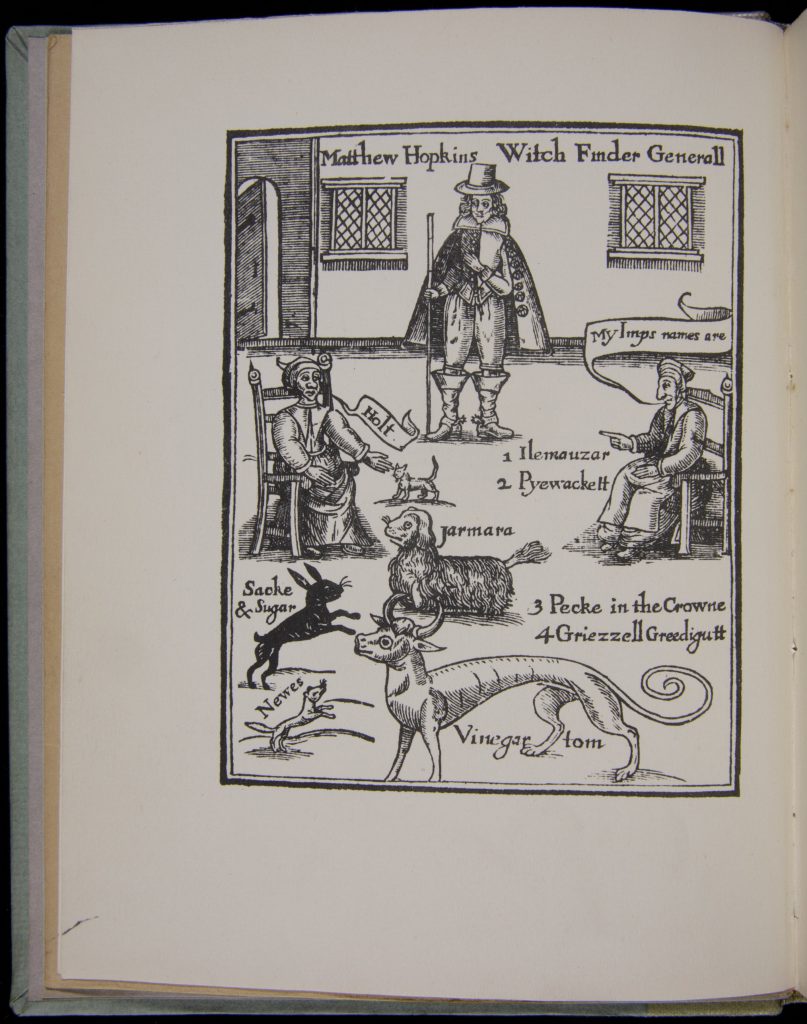
Although magic and witchcraft had existed since antiquity, early modern Europe underwent a growth in anxiety about witches and their practices that led to a period of heightened witch hunting. Social and economic problems, changes to the legal system, and religious upheaval all served as necessary preconditions for the age of witch-hunts.
The documents collected here explore some of these aspects of magical belief and especially the anxiety and concerns centering on witches, bad magic, and witch-hunts in early modern Europe. Scholars and commentators produced these works seeking to understand, and help combat, the spread of witchcraft or to help people recognize the folly in continuing to believe in the possibility of magic. Although sometimes written in Latin, many authors aimed their works at a more general audience or had their works translated into the vernacular for broader consumption.
Please consider the following questions as you review the documents
- How did magic and witchcraft fit into the general world view of people in early modern Europe?
- What factors led to an increased concern with witchcraft and the ability and willingness of people to accuse people of witchcraft and put them on trial?
- Why were women more likely to be accused of witchcraft?
- Why does witch hunting decline and what is the relationship of this decline to the overall belief in magic?
Magical Beliefs
A belief in occult powers stemming from natural or supernatural causes had existed since antiquity and continued to be part of European society into the eighteenth century. Although the rationale for these beliefs shifted from time to time, the basic premise remained constant: namely, people could cause change, or make predictions, through their understanding of the natural world and how it interacted with the objects and people around them.
One rationale came from religious beliefs which argued that God, or gods (or perhaps demons) enabled people to practice magic. In this instance, people performed magic thanks to the influence of supernatural beings. Alternately, Aristotle’s argument that the sublunary sphere operated as a microcosm for the superlunary sphere also resonated strongly with those who believed in magic. Astrology, in this way, made perfect sense as the impact of stars in the heavens could easily be felt or observed on earth. The way some flowers followed the sun during the day or the impact of the moon on the tides provided easy examples of how the stars influenced people and things on Earth. Platonic and neo-platonic arguments about the great chain of being, the links between the distance planets and things on earth, also provided strong intellectual support for magical beliefs.
Magical thinking ran across a wide spectrum of practices and beliefs. Some proved very popular and had broad support. These included astrology, palm reading (chiromancy), and divination through the four elements (geomancy, aeromancy, pyromancy, and hydromancy). Fortune telling was common as were binding spells, especially those dealing with relationships. Less acceptable were those forms of magic that seemed to draw on the dark side or required demonic help such as necromancy, a form of magic that explicitly used spirits. Astrology proved enormously popular and was practiced by people professionally, such as William Lilly, as well as by amateurs. People turned to astrology to answer questions about the weather, politics, stolen objects, and missing people among many others.
A number of authors argued in favor of natural magic. Marsilio Ficino and Giovanni Pico della Mirandola wrote books arguing for natural magic, as did Heinrich Cornelius Agrippa in his work On Occult Philosophy (1531).
Selection: Heinrich Cornelius Agrippa von Nettescheim, On Occult Philosophy (1531)
The second chapter of Heinrich Cornelius Agrippa von Nettescheim’s sixttenth-century book On Occult Philosophy begins with a definition of magic, calling it the most sublime part of natural philosophy.
Translation of detail from page 22:
Magic is a faculty of wonderful virtue, full of the most important mysteries, and containing the most profound contemplation of hidden secrets along with a knowledge of all of Nature – including its essence, power, quality, substance, and virtue. Magic instructs us on how things differ and agree with each other in order to produce wondrous effects by uniting the virtues of things through the application of them one to the other, as well as to lesser things affected by them, and joining and knitting them together by the powers and virtues of the higher beings. Magic is the most perfect and chief science, a sacred and sublime kind of philosophy, and lastly the absolute perfection of all philosophy.
Selection: William Lilly, Merlinus Anglicus Junior: The English Merlin Revived (1644)
William Lilly, a well-known astrologer working in seventeenth-century London, cast horoscopes for many people during his career. Here, Lilly casts a horoscope, called a figure, to predict what will happen in England during the upcoming year.
The first line of the interior square in the Signature reads “Figure of the World for 1644”
Selection: John Middleton, Practical Astrologie (1679)
John Middleton provided some concrete examples of astrological figures with predictions. Here he has cast a figure to provide information on someone’s missing brother.
Please consider the following questions as you review the documents:
- How does Agrippa describe magic and its relationship with other fields of thought?
- How might astrology be useful to people in their daily lives?
Demonology
One of the ways historians can track changes in beliefs about magical practice is through an analysis of books on witchcraft, called works of demonology. Even as magical practices like astrology might be deemed acceptable there was increasing concern, among intellectual elites and society in general, that the devil actively sought to subvert civilization by recruiting people to act on his behalf. These people were witches.
Societies responded to this rising concern by passing laws making witchcraft a secular crime in addition to already being a religious crime. These laws often coincided with changes to the legal system in general including an increased emphasis on confessions, often gained through torture, and changes in the way people accused others.
Books of demonology provide one method of tracking some of these societal changes although they must be read with care. Such books do not always reflect the beliefs of the general population. One of the most infamous books of demonology, the Malleus Maleficarum written by Jacob Sprenger and Heinrich Kramer and published in 1484, had a tendency to equate witches with women. However, their writing of the book came as a result of a push back from the region in which they were working as inquisitors. When the local population decided they had put too many women in prison awaiting trial, they kicked Sprenger and Kramer out and freed the women. That action provided the impetus for them to write their book; thus, rather than writing it to reinforce common beliefs, they wrote it to try and change people’s minds.
The Malleus Maleficarum provides a textbook for how to identify witches, described what witches did, and showed how to try them in courts of law. Other demonological treatises were penned by legal theorists and jurists such as Jean Bodin’s On the Demonmania of Witches, Nicholas Rémy’s Demonolatry, and Henri Boguet’s Examen of Witches. In addition, King James I wrote a short treatise titled Demonology describing his understanding of witches in Scotland.
Selection: Jean Bodin, On the Demonmania of Witches (1580)
Jean Bodin, a demonology and political theorist, provides a definition of a witch at the beginning of his book.
Translation of the first sentences of page 1:
The Definition of a Witch
Chapter 1
A witch is one who knowingly tries to accomplish something by diabolical means. I have set down this definition because it is necessary not only to understand this treatise, but also for the judgements that must be rendered against witches, which has been omitted up to now by all those who have written on witches; however, it is the foundation on which this treatise will be built. Therefore, let us examine our definition in detail. First, I use the word knowingly, since it is true that error cannot involve any consent, as the law says. So, a sick person who in good faith uses a diabolical formula given to him by a witch who he thought was a good man, is not a witch for his has a just case for his ignorance. But this is not the case if the witch announces it to him or invokes evil spirits in his presence, as they sometimes do. I have give this only as an example and it will be treated more fully below.
Selection: Hermann Beigel, The Examination and Confession of Certain Witches at Chelmsford in the County of Essex, July 26, 1556 (1863)
Hermann Beigel provides a summary of the confessions of witches in Chelmsford, England from 1556.
Please consider the following questions as you review the documents:
- How are witches described and defined?
- Why might witch hunting be described as a “mania”?
Witch Hunts
Although people had been accused and tried for witchcraft in small numbers prior to 1500, the frequency and intensity of such activities increased dramatically over the course of the sixteenth century. The size of witch-hunts varied substantially. While most cities and towns never had a hunt, others might have a short period when one to three people were accused. Larger hunts, however, were not uncommon. In extreme cases dozens or even hundreds of people might be accused and, in ever more extraordinary circumstances, hundreds of people might be executed.
Having an intellectual justification for witch-hunts provided a crucial precondition. Without the ideological foundation that witches existed, had help from the devil or demons, and did harmful magic, it would have proven difficult to accuse others much less hold them accountable in a court of law. Other mitigating factors, however, led to the rise of hunts in a particular area. Witch-hunts appeared more often in the borderlands between Catholic and Protestant regions. The Protestant Reformation did not “cause” witch-hunts, but those areas struggling with religious differences might use witch-hunts as a means to release religious anxieties. Other triggers include those places suffering social or economic problems. A region with a large number of impoverished people or “others” (such as Jews or Gypsies) ran a higher risk of a witch-hunt. Similarly, those areas facing a socio-economic crisis of some kind, such as widespread crop failure or diseases, might respond by lashing out at people who they felt might have caused their problems. Confessions were often obtained forcibly, sometimes using various means of torture.
In a few areas, self-appointed witch-finders appeared to help the local population identify, accuse, and try potential witches. One of the most famous was Matthew Hopkins, who designated himself a “Witch-Finder General” and hired himself and his servants out to assist local municipalities.
Selection: Matthew Hopkins, The Discovery of Witches (1647, 1931 reprint)
The frontispiece illustrates Matthew Hopkins and his assistants. The first pages help justify his ability to identify witches without being named a witch himself.
Please consider the following questions as you review the documents:
- What kinds of activities did people accuse witches of practicing?
- Why might a community utilize a “witch hunter” like Matthew Hopkins?
The Witch/Gender
Witches followed a distinct stereotype although we need to be careful not to limit our understanding of what a witch was by following only the stereotype. Witches were, in general, women. They were generally older women. They were more likely to be women without a particularly strong support network of friends or family. They were often women who seemed strange, created tensions or had personality traits that caused them to rub people the wrong way. Most importantly, they were suspected of doing harmful magic, probably over a period of some years. As the historian Christine Larner argued, women were not accused of being witches because they were women; they were accused because they acted like witches. In this way, witchcraft is a sex-related crime, but not a sex-specific crime.
Selection: Francesco Maria Guazzo, Compendium maleficarum in tres libros distinctum ex pluribus authoribus (1608)
The following images depict what demonologies imagined took place at meetings held with witches and the devil. These are based largely on the forced confessions of the accused.
Thus, while approximately eighty percent of people accused of witchcraft were women, it still meant one in five people accused were men. Men were generally accused in different ways than women; most importantly, men’s accusations were often linked with other crimes. The European-wide average of eighty percent also hides regional differences. In a few areas (albeit a very few) men comprised a majority of those accused. In other areas, women dominated almost entirely the list of those charged with witchcraft.
Selection: James I, King of England, Demonology: in forme of a dialogue (1603)
King James I’s book, Demonology, provided a discussion of witches in dialogue format.
Significantly, the people most likely to accuse women of witchcraft were other women. This is in part an indication of who probably knew the accused best. It also indicates the dominance of the idea of women as more likely to be seduced by the devil and more likely to be “weaker” emotionally, physically, and mentally. As such, some people believed women might resort to witchcraft more readily than men who had other options at their disposal to defend themselves or assert power over others. Women were perceived as less powerful and so more likely to look outside themselves for help. Women, however, were not accused of witchcraft because they were powerless but precisely because they were perceived to have some sort of power over people through magic.
Please consider the following questions as you review the documents:
- Why are those people accused of being witches more likely to women?
- In the images we see both men and women? Why, if witches were more likely to be men, did people depict both men and women or practicing witchcraft?
Skepticism and Decline
The decline of witch-hunting took place over a number of decades across Europe. Some locations had largely ceased hunting witches by around 1600 while others continued to have trials into the late seventeenth century including the trials in England’s North American colonies such as Salem. A number of factors played into this shift including both a reduction in accusations as well as an unwillingness among judges to take seriously the reality of harmful magic.
Certainly, some of the preconditions that abetted the earlier spread of witch-hunts were no longer as significant. Religious conflict was in decline. The Thirty Years’ War had started, in part, for religious reasons in 1618 but religion was less of an issue at the end of that war. After the social and economic downturn in the sixteenth century, the seventeenth century saw some stabilization of prices and an increase in some wages. In addition, after the little ice age in the 1610s, agriculture became somewhat more stable for the rest of the center and food production, by 1700, was more reliable.
Intellectually, the support for magic, based on Aristotelian and Neo-platonic ideas, was displaced in favor of the mechanical philosophy as espoused by proponents of the ongoing revolution in science and philosophy. More directly, a rising skepticism, which had emerged in the sixteenth century and which really took hold in the seventeenth century, caused some people to cast doubt on supernatural beliefs. As a result, authors wrote extensive critiques of witchcraft and offered alternative explanations for what people had taken to be magic. These authors proposed natural causes in lieu of supernatural or demonic rationales. Works by Reginald Scot and Johann Weyer came to represent this new skeptical understanding, at least on the part of the intellectual elite, of witchcraft and its place in the mentality of people in Europe.
Selection: Reginald Scot, Skepticism about Witchcraft (1584)
Reginald Scot was an early skeptic about witchcraft and magical practices. Here he is offering a critique of why some people think they are witches and the purported pact with the devil.
Please consider the following questions as you review the documents:
- How does Reginald Scot argue against the practices of alleged witches?
- Is it possible to believe in magic, but not believe in witchcraft?
Magical Thinking
These texts, written by Heinrich Cornelius Agrippa, William Lilly, and John Middleton, offer a glimpse into how people in the early modern period looked to the occult as a means to answer questions, create change, or make predictions. While magical thinking took many forms, astrology, practiced by Lilly and Middleton, was particularly popular.
Books on Witchcraft
These books are examples of works of demonology, from which various and contradictory beliefs about witchcraft and witches in this period can be gleaned.
Women and Witch Hunts
As the frequency and intensity of witch hunts increased over the course of the sixteenth century, so too did the number of witch-finders like Matthew Hopkins and images and texts about witches, who were more likely to be women accused of performing harmful magic. By the turn of the century, witch-hunting had started to decline, in part due to growing skepticism of magic, captured by Reginald Scot’s Skepticism About Witchcraft.
Further Reading
Bengt Ankarloo and Stuart Clark, eds. Witchcraft and Magic in Europe. 6 vols. (Philadelphia: University of Pennsylvania Press, 1999).
Brian Copenhaver, Magic in Western Culture: From Antiquity to the Enlightenment (Cambridge: Cambridge University Press, 2015).
Stuart Clark, Thinking with Demons: The Idea of Witchcraft in Early Modern Europe (Oxford: Oxford University Press, 1999).
Christina Larner, Witchcraft and Religion: The Politics of Popular Belief (New York: Blackwell, 1984).
Keith Thomas, Religion and the Decline of Magic (London: Scribner, 1971).



